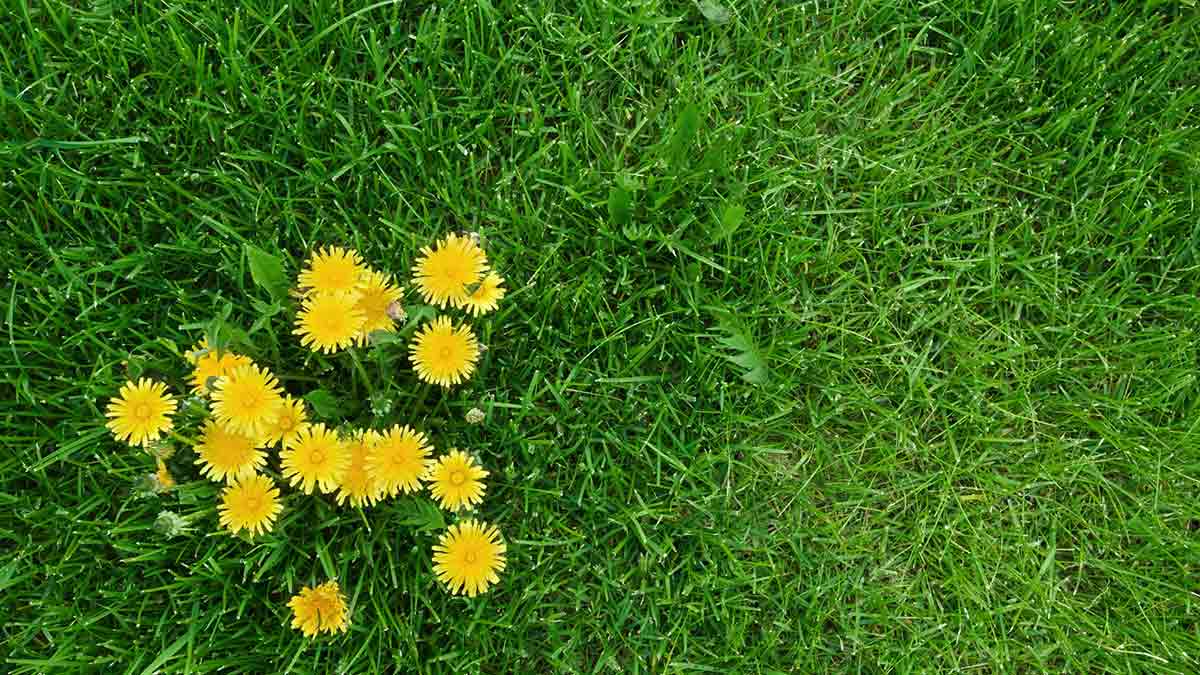Dr Des Corrigan loses the plot at the suggestion he allow dandelions to take over his garden, but it led him to consider the medicinal value of some common humble plants
A recent lawn-cutting session triggered an examination of my eco-conscience arising from my rather extreme reaction to the arrival of the ‘No-Mow May’ campaign leaflet from An Post and the National Biodiversity Centre. While the lazy part of me liked the idea of not cutting the postage stamp-sized green excuse that
is our back lawn, I really lost the plot at the suggestion that I allow dandelions to take over the garden. My expletive laden commentary was just as colourful as the An Post leaflet. I recognise the importance of keeping the pollinator population thriving and healthy and I have no problem with red and white clovers or indeed the Self Heal, all of which are growing in the lawn. However, I draw the line at allowing dandelions to take over the garden, as they attempt to do every year.
After I had calmed down and made a mental inventory of the extensive range of pollinator-friendly plants, amoung them Ox-Eye Daisy and Cotoneaster, that we grow in the garden, my thoughts, as a card-carrying pharmacognosist, turned to the potential medical value of some of the plants listed by An Post. Self Heal, as its name implies, is an obvious candidate and indeed it has a reputation in traditional and folk medicine all around the world. For example, the 2020 edition of the Chinese Pharmacopoeia has a monograph on Prunella vulgaris, which is the botanical name for Self-Heal. Closer to home, the Wildflowers of Ireland website quotes a Co Kerry citation from the National Folklore Collection at UCD, that “Sel-Heal if gargled cures sore throat.” My go-to source on Irish folk medicine in Ireland, published in 1919. It was compiled by a Dungarvan GP named Michael Moloney and notes that Prunella was used to make ‘Cailleach’s Tea’, recommended for a weak heart. Support of a sort for this comes from a 2013 paper in BMB Reports from Korea that an ethanolic extract from Prunella had a protective effect against TNF-?- induced inflammatory responses in human aortic smooth muscle cells.
The anti-inflammatory response does not surprise me because one of the major chemicals in Prunella is rosmarinic acid, found in most members of the mint family and known to be a powerful antioxidant with anti-inflammatory effects and believed to be responsible for the clinically proven effect of a Lemon Balm (Melissa) extract in cases of cold sores due to Herpes Simplex Virus (HSV-1). According to a 2022 review in the Journal of Ethnopharmacology, rosmarinic acid is but one of a number of bioactive molecules found in Self Heal.
Others include triterpenes, steroids and particularly polysaccharides that are also potent inhibitors of HSV-1. Pharmacological studies reviewed in a 2022 paper in Frontiers in Pharmacology revealed a variety of effects, notably anti-inflammatory, anti-tumour, antiviral, hypoglycaemic and liver protective activity. Studies in
rats showed reduced thyroid volumes, thyroiditis inflammation scores and serum thyroglobulin antibody levels.
This effect on the thyroid is consistent with the long history of use of Prunella in TCM in cases of swelling of the thyroid, leading to its introduction as an adjuvant in conventional treatment of thyroid conditions in China. A clinical study reported in Annals of Translational Medicine in 2019 showed that using Prunella in combination with prednisolone reduced the consumption of prednisolone in patients with subacute thyroiditis. A meta-analysis of the safety and efficacy of Prunella preparations in adjuvant treatment of thyroid nodules appeared in Medicine
in 2021. There were 13 RCTs with 1,468 patients included in the evaluation. A combination of levothyroxine and Prunella was compared to levothyroxine alone. The meta-analysis showed that the combination could effectively reduce the mean diameter of thyroid nodules, avoiding the pain and cost of surgery.
An extract of Prunella and a combination with Gentian extract inhibited expression of COX2 in chondrocytes and decreased sclerosis and increased bone mineral density in mice with induced osteoarthritis, according to a 2022 paper in Antioxidants. The ability of Self-Heal to accelerate wound healing was demonstrated in another 2022 paper in the Journal of Ethnopharmacology that reported that various extracts, as well as ursolic, chlorogenic and rosmarinic acids isolated from them, were effective in both linear and circular excision wound models. The three compounds were also anti- inflammatory in the acetic acid-induced capillary permeability test and rosmarinic acid had significant anti-elastase and anti- collegenase activity. All-in-all, Self-Heal is a plant worth cherishing, not just for pollinators, but for humans also.
But what about Dandelion as a medicinal plant, you might well ask. After all, virtually every child knows of its traditional reputation as a diuretic. However, that reputation is over-exaggerated going on the basis of the experimental evidence, notably that from my esteemed former colleagues in Trinity, Ingrid Hook and Martin Henman, to the effect that any diuretic activity in lab animals was likely to be due to a very high level of potassium (up to 4.9 per cent in some Irish samples).
Despite the lack of experimental and clinical data for a diuretic effect, the EMA’s herbal committee accepted a traditional use indication in the Community Herbal
Monograph on Dandelion Leaf that it could be used to increase the amount of urine
to achieve flushing of the urinary tract as an adjuvant in minor urinary complaints. There two other CHMs for Dandelion; for the Root and for Root with Herb. These include the diuretic indication, but also a second indication as a traditional herbal medicinal product for the relief of symptoms related to mild digestive disorders (such as feeling of abdominal fullness, flatulence and slow digestion) and temporary loss of appetite. There is some evidence of an increase in bile volume in rats and dogs, but no clinical trial evidence. The HPRA has licensed a product containing the Root and Herb in combination with Artichoke, Boldo and Peppermint leaves with a digestive indication. An important caution appears in the CHM on the Root — due to possible stimulation of bile secretion, the root is not recommended in case of obstruction of the bile duct, cholangitis, liver disease, gallstones or other biliary diseases.
Apart from that, I still hate them in the garden and they will be exterminated on sight.
Sorry, pollinators
Dr Des Corrigan, Best Contribution in Pharmacy Award (winner), GSK Medical Media Awards 2014, is a former Director of the School of Pharmacy at TCD and won the Lifetime Achievement Award at the 2009 Pharmacist Awards. He was chair of the Government’s National Advisory Committee on Drugs from 2000 to 2011. He currently chairs the Advisory Subcommittee on Herbal Medicines and is a member of the Advisory Committee on Human Medicines at the IMB. He is a National Expert on Committee 13B (Phytochemistry) at the European Pharmacopoeia in Strasbourg and he is an editorial board member of the Journal of Herbal Medicine and of FACT — Focus on Alternative and Complementary Therapy.







